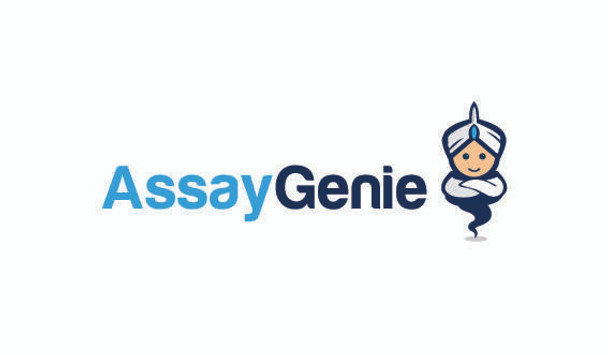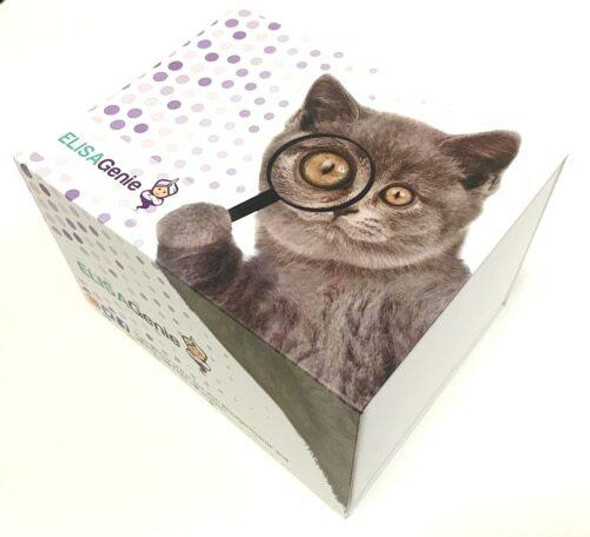Description
Principle of the Assay
This assay employs the qualitative enzyme immunoassay technique. The microtiter plate provided in this kit has been pre-coated with antigen. Samples are pipetted into the wells with anti-human immunoglobulin conjugated Horseradish Peroxidase (HRP). Any antibodies specific for the antigen present will bind to the pre-coated antigen. Following a wash to remove any unbound reagent, a substrate solution is added to the wells and color develops in proportion to the amount of human PTH 1-34 antibody bound in the initial step. The color development is stopped and the intensity of the color is measured.
Specificity
This assay has high sensitivity and excellent specificity for detection of human PTH 1-34 antibody. No significant cross-reactivity or interference between human PTH 1-34 antibody and analogues was observed.
Note: Limited by current skills and knowledge, it is impossible for us to complete the cross-reactivity detection between human PTH 1-34 antibody and all the analogues, therefore, cross reaction may still exist
Precision
Intra-assay Precision (Precision within an assay): CV% <15%
Three samples of known concentration were tested twenty times on one plate to assess.
Inter-assay Precision (Precision between assays): CV%<15%
Three samples of known concentration were tested in twenty assays to assess.
Materials Supplied
| Reagent | 96 wells |
| Assay Plate | 1 x 96 wells |
| Negative Control | 1 x 800 µl |
| Positive Control | 1 x 800 µl |
| Sample Diluent | 2 x 20 mL |
| HRP-conjugate (100x concentration) | 1 x 120 µl |
| HRP-conjugate Diluent | 1 x 20 mL |
| Wash Buffer (25 x concentrate) | 1 x 20 mL |
| TMB Substrate | 1 x 10 mL |
| Stop Solution | 1 x 10 mL |
| Plate Sealers | 4 |
| Instruction Manual | 1 |
Storage
Unopened Kit: Store at 2 - 8°C. Do not use the kit beyond the expiration date.
Opened Kit: May be stored for up to one month at 2 - 8° C.
*Provided this is within the expiration date of the kit
Materials required but not Supplied
• Microplate reader capable of measuring absorbance at 450 nm, with the correction wavelength set at 540 nm or 570 nm.
• An incubator which can provide stable incubation conditions up to 37°C±0.5°C.
• Squirt bottle, manifold dispenser, or automated microplate washer.
• Absorbent paper for blotting the microtiter plate.
• 100ml and 500ml graduated cylinders.
• Deionized or distilled water.
• Pipettes and pipette tips.
• Test tubes for dilution.
Precautions
The Stop Solution provided with this kit is an acid solution. Wear eye, hand, face, and clothing protection when using this material.
Sample Collection and Storage
Serum Use a serum separator tube (SST) and allow samples to clot for two hours at room temperature or overnight at 4°C before centrifugation for 15 minutes at 1000 ×g. Remove serum and assay immediately or aliquot and store samples at -20°C or -80°C. Avoid repeated freeze-thaw cycles.
Plasma Collect plasma using citrate, EDTA, or heparin as an anticoagulant. Centrifuge for 15 minutes at 1000 g within 30 minutes of collection. Assay immediately or aliquot and store samples at -20° C. Avoid repeated freeze-thaw cycles.
Sample Preparation
Serum and plasma samples require a 800-fold dilution into Sample Diluent. The suggested 800-fold dilution can be achieved by adding 5μl sample to 95μl of Sample Diluent first, then complete the 800-fold dilution by adding 6μl of this solution to 234μl of Sample Diluent.
Note:
1. Assay Genie is only responsible for the kit itself, but not for the samples consumed during the assay. The user should calculate the possible amount of the samples used in the whole test. Please reserve sufficient samples in advance.
2. Samples to be used within 5 days may be stored at 2-8°C, otherwise samples must be stored at -20°C (≤1month) or -80°C (≤2month) to avoid loss of bioactivity and contamination.
3. Grossly hemolyzed samples are not suitable for use in this assay.
4. If the samples are not indicated in the manual, a preliminary experiment to determine the validity of the kit is necessary.
5. Fresh samples without long time storage are recommended for the test. Otherwise, protein degradation and denaturalization may occur in those samples and finally lead to wrong results.
Reagent Preparation
Note:
• Kindly use graduated containers to prepare the reagent. Please don't prepare the reagent directly in the Diluent vials provided in the kit.
• Bring all reagents to room temperature (18-25°C) before use for 30min.
• Distilled water is recommended to be used to make the preparation for reagents. Contaminated water or container for reagent preparation will influence the detection result.
1. Wash Buffer(1x)- If crystals have formed in the concentrate, warm up to room temperature and mix gently until the crystals have completely dissolved. Dilute 20 ml of Wash Buffer Concentrate (25 x) into deionized or distilled water to prepare 500 ml of Wash Buffer (1 x).
2. HRP-conjugate (1x) - Centrifuge the vial before opening. HRP- conjugate requires a 100-fold dilution. A suggested 100-fold dilution is 10 μl of HRP-conjugate + 990 μl of HRP-conjugate Diluent.
Assay Procedure
Bring all reagents and samples to room temperature before use. Centrifuge the sample again after thawing before the assay. It is recommended that all samples and controls be assayed in duplicate.
1. Prepare all reagents, and samples as directed in the previous sections.
2. Refer to the Assay Layout Sheet to determine the number of wells to be used and put any remaining wells and the desiccant back into the pouch and seal the ziploc, store unused wells at 4°C.
3. Set a Blank well without any solution.
4. Add 100μl of Negative Control, Positive Control or diluted Sample per well.
5. Cover with the adhesive strip provided. Incubate for 30 minutes at 37°C.
6. Aspirate each well and wash, repeating the process two times for a total of three washes. Wash by filling each well with Wash Buffer (200μl) using a squirt bottle, multi-channel pipette, manifold dispenser, or autowasher, and let it stand for 2 minutes, complete removal of liquid at each step is essential to good performance. After the last wash, remove any remaining
Wash Buffer by aspirating or decanting. Invert the plate and blot it against clean paper towels.
7. Add 100μl of HRP-conjugate(1×) to each well (not to Blank!). Cover the microtiter plate with the adhesive strip. Incubate for 30 minutes at 37°C.
8. Repeat the aspiration/wash process for five times as in step 6.
9. Add 90μl of TMB Substrate to each well. Incubate for 20 minutes at 37°C. Protect from light.
10. Add 50μl of Stop Solution to each well, gently tap the plate to ensure thorough mixing.
11. Take blank well as zero, determine the optical density of each well within 10 minutes, using a microplate reader set to 450 nm.
*Samples may require dilution. Please refer to Sample Preparation section.
Note:
1. The final experimental results will be closely related to validity of the products, operation skills of the end users and the experimental environments.
2. Samples or reagents addition: Please carefully add samples to wells and mix gently to avoid foaming. Do not touch the well wall as possible. For each step in the procedure, total dispensing time for addition of reagents or samples to the assay plate should not exceed 3 minutes. This will ensure equal elapsed time for each pipetting step, without interruption.
Duplication of all specimens, although not required, is recommended. To avoid cross contamination, change pipette tips between sample additions, and between reagent additions. Also, use separate reservoirs for each reagent.
3. Incubation: To ensure accurate results, proper adhesion of plate sealers during incubation steps is necessary. Do not allow wells to sit uncovered for extended periods between incubation steps. Once reagents have been added to the well strips, DO NOT let the strips DRY at any time during the assay. Incubation time and temperature must be observed.
4. Washing: The wash procedure is critical. Complete removal of liquid at each step is essential to good performance. After the last wash, remove any remaining Wash Solution by aspirating or decanting and remove any drop of water and fingerprint on the bottom of the plate. Insufficient washing will result in poor precision and falsely elevated absorbance reading. When using an automated plate washer, adding a 2 minutes soak period following the addition of wash buffer, and/or rotating the plate 180 degrees between wash steps may improve assay precision.
5. Controlling of reaction time: Observe the change of color after adding TMB Substrate (e.g. observation once every 10 minutes), TMB Substrate should change from colorless or light blue to gradations of blue. If the color is too deep, add Stop Solution in advance to avoid excessively strong reaction which will result in inaccurate absorbance reading.
6. TMB Substrate is easily contaminated. TMB Substrate should remain colorless or light blue until added to the plate. Please protect it from light.
7. Stop Solution should be added to the plate in the same order as the TMB Substrate. The color developed in the wells will turn from blue to yellow upon addition of the Stop Solution. Wells that are green in color indicate that the Stop Solution has not mixed thoroughly with the TMB Substrate.
Calculation of Results
For calculation the valence of human PTH 1-34 antibody, compare the sample well with control.
• While ODsample <2.1x ODnegative: Negative
• While ODsample ≥2.1x ODnegative: Positive






